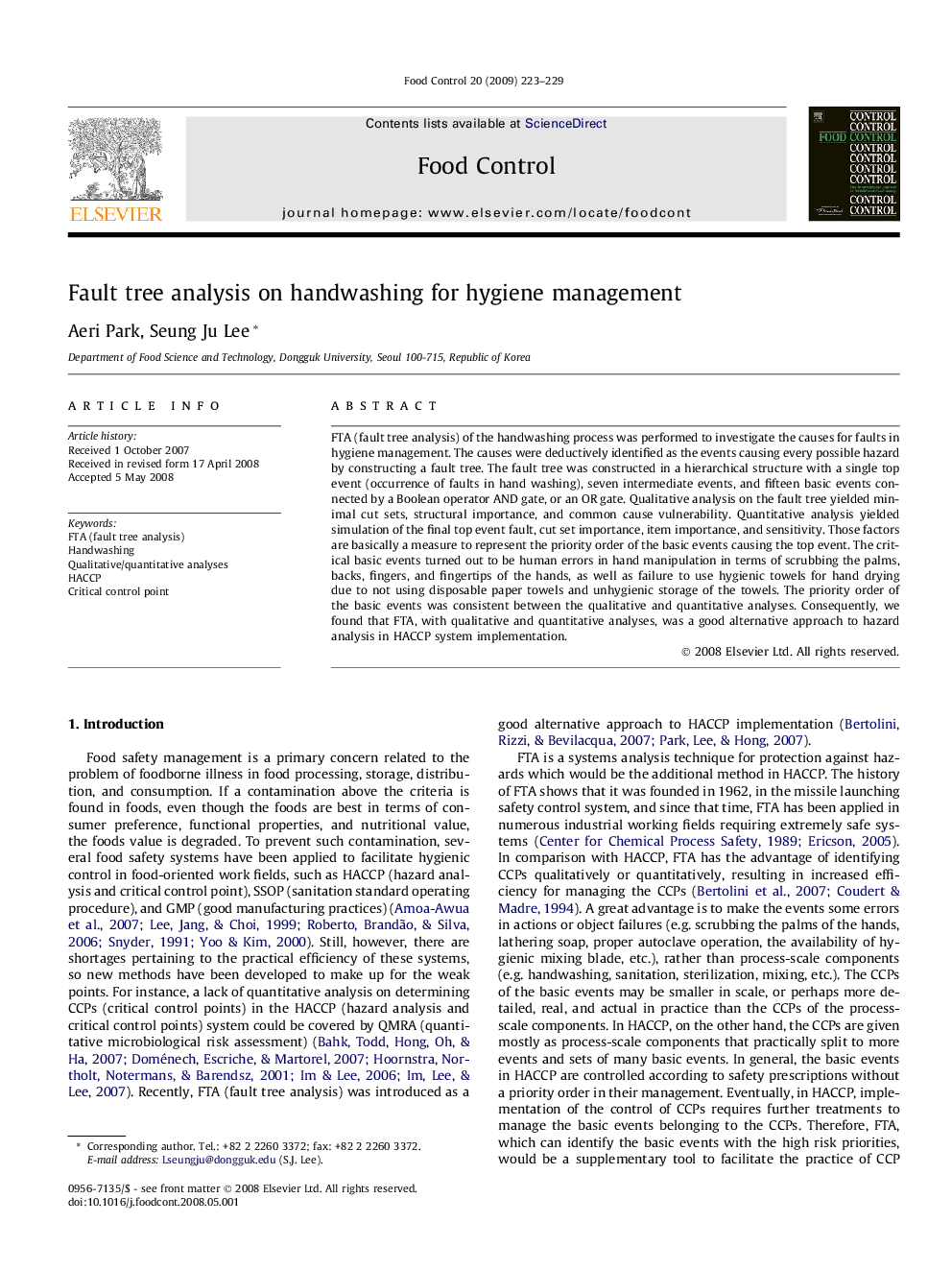| Article ID | Journal | Published Year | Pages | File Type |
|---|---|---|---|---|
| 4560212 | Food Control | 2009 | 7 Pages |
FTA (fault tree analysis) of the handwashing process was performed to investigate the causes for faults in hygiene management. The causes were deductively identified as the events causing every possible hazard by constructing a fault tree. The fault tree was constructed in a hierarchical structure with a single top event (occurrence of faults in hand washing), seven intermediate events, and fifteen basic events connected by a Boolean operator AND gate, or an OR gate. Qualitative analysis on the fault tree yielded minimal cut sets, structural importance, and common cause vulnerability. Quantitative analysis yielded simulation of the final top event fault, cut set importance, item importance, and sensitivity. Those factors are basically a measure to represent the priority order of the basic events causing the top event. The critical basic events turned out to be human errors in hand manipulation in terms of scrubbing the palms, backs, fingers, and fingertips of the hands, as well as failure to use hygienic towels for hand drying due to not using disposable paper towels and unhygienic storage of the towels. The priority order of the basic events was consistent between the qualitative and quantitative analyses. Consequently, we found that FTA, with qualitative and quantitative analyses, was a good alternative approach to hazard analysis in HACCP system implementation.
